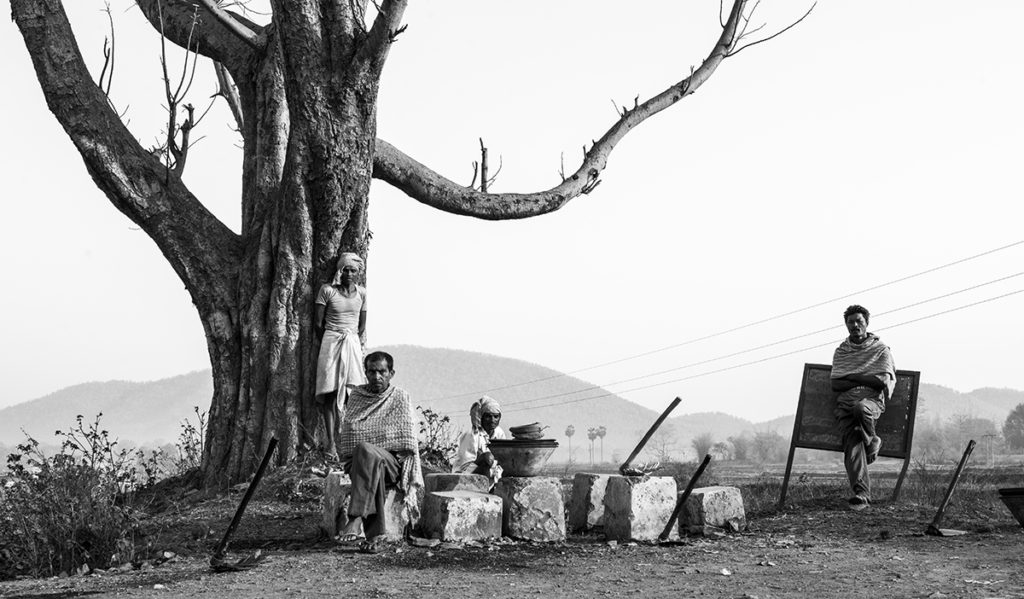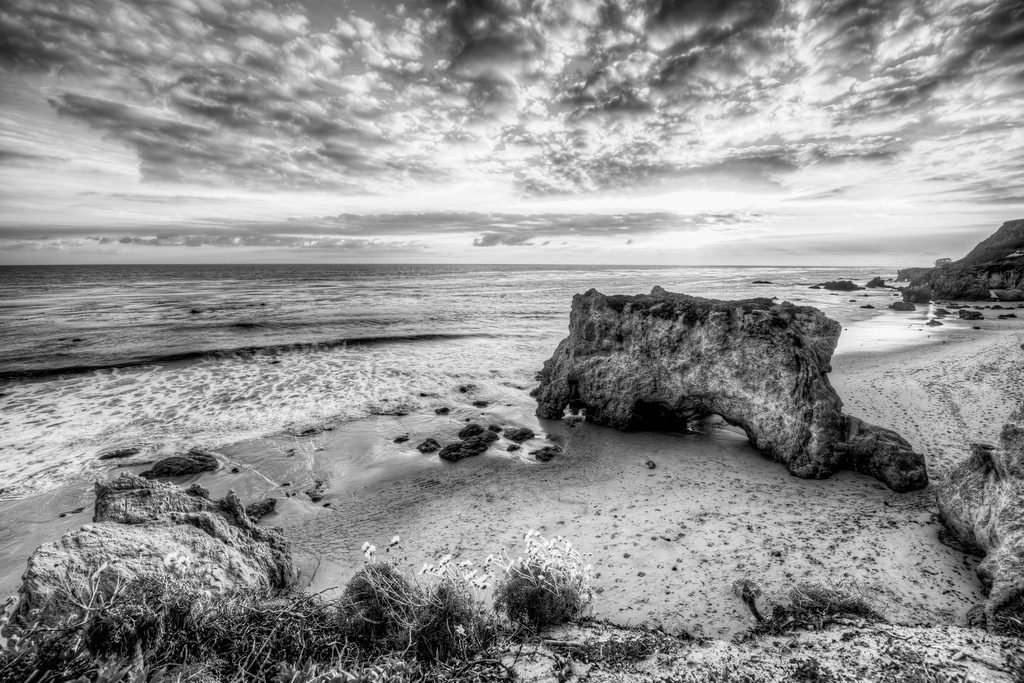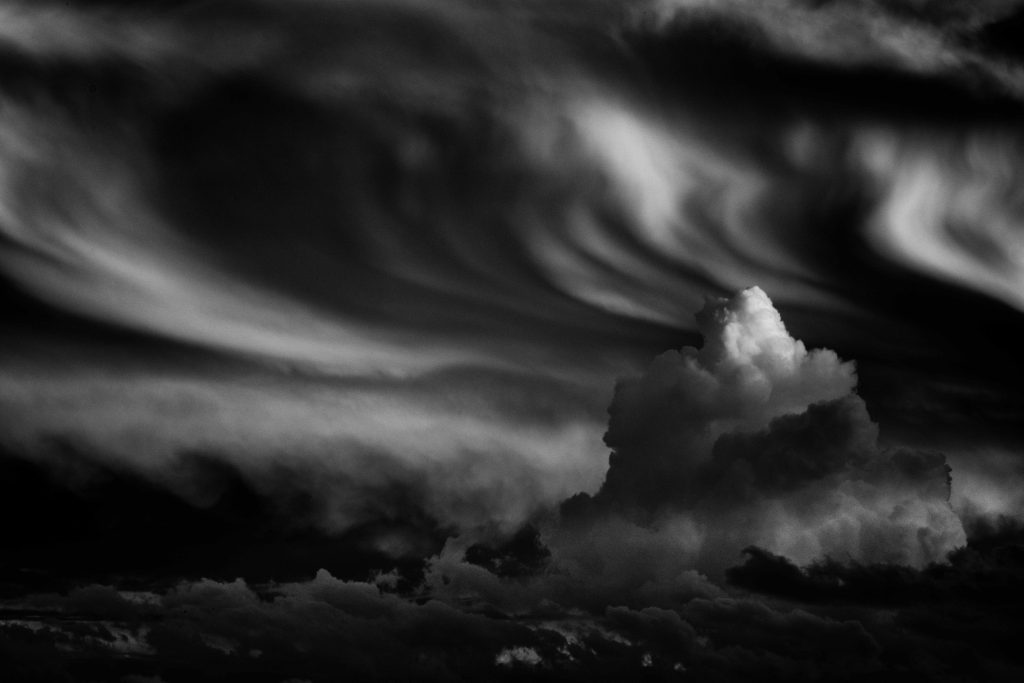Waiting for Work, Jharkhand, India, 2014. Prabuddha Ray
If you were to show me the photo above and ask me guess whether it was film or digital, my guess would be film. I’d say film because the sky is white. White skies, with little or no distinction between the sky and clouds, are a fairly reliable signature of traditional silver halide b&w photography. Panchromatic black-and-white film is more sensitive to blue than to other colors (although by how much varies with the emulsion, some being more sensitive to greens and others to reds than others. Orthochromatic b&w film is very sensitive to blue) and thus, film will overexpose blue skies relative to terrestrial subjects, giving you a white sky.
When shooting b&w film, if I want a detailed sky, I’ll use a K2 yellow or #25 “light red” filter. The principle is basic. A filter transmits light of its own color and absorbs its complementary color. It follows that the way to darken sky and make clouds stand out is to use a yellow or red filter, red being blue’s complimentary color. A yellow filter will render the sky more or less “normally” – i.e there’ll be a distinct tonality to the sky, lighter at the horizon and getting darker as you move up, clouds visible. The #25 light red will give you a darker sky and more dramatically contrasted clouds, more like what you’d expect with digital b&w. To get the full-on dawn-of-the-dead look, I’d use a #29 dark red filter.
*************
B&W Digital Skies. Nikon D800 (photographer unknown)
Above is an example of how a digital sensor renders sky. Digital sensors don’t have the same color biases as do film stocks. A digital sensor typically has equal Red, Green and Blue sensitivity, the result being photos that represent sky with much more detail than does film.
It’s that, along with its increased sharpness/acutance and less highlight roll off, which differentiates digital b&w from film b&w. While ‘film emulation’ software like Silver Efex helps narrow the aesthetic difference, no amount of running native digital files through emulation software will completely eradicate the differences inherent in the capture, and a trained eye can see the difference.
Of course, arguing the relative merits of either is a matter of taste. Each medium is a transcription and not an objective rendering. The reason I prefer the first photo to the second, apart from other subjective aesthetic issues, is because my photographic tastes were created and shaped during the film era and that look is the standard I use when judging digital b&w. It looks “natural” to me, the digital looking like an affectation. Someone coming of photographic age in the digital era might, and probably does, see things differently. That’s OK.
I do like Mr. Ray’s photo, for reasons over and above its ‘film look.’ Interesting then, that it’s not from a negative but was shot with a Nikon D800, proving that for every generalization there’s a thousand exceptions. What’s notable to me about the photo is that it hasn’t been self-consciously post-processed with all the usual b&w film clues – grain, specific tonal looks etc. It’s just the sky, or the lack of it, that drew my eye to it after googling “Nikon D800 B&W,” it being an outlier in a sea of overdone “zombie apocalypse” skies like the photo below. Something that simple.



